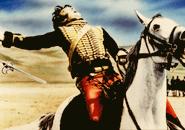Filmed in 1968 at the height of the counterculture movement, as the escalation of the Cold War and a seemingly interminable Vietnam War pervaded the collective consciousness of the entire international community, Tony Richardson’s sumptuous, confrontational, and acutely rendered magnum opus, The Charge of the Light Brigade is a scathing indictment, not only of the arrogance and madness of war, but more importantly, of the myopic insularity of class and privilege intrinsic in the monolithic culture of the people behind the powerful institutions who wage these wars. A chronicle of the British involvement – or more appropriately, insinuation – into the Crimean War between Russia and the Ottoman Empire that led to the ill-fated uphill charge of the Light Brigade cavalry against a waiting, well-armed Russian artillery unit in the valley of Balaclava, the film follows the plights of the battle’s key historic figures in the lead up to the confrontation and its inevitable aftermath: Lord Raglan (John Gielgud), the elderly, muddle-headed, incompetent commander and field strategist whose career had been defined by his experience in Waterloo and continues to regard each enemy encounter as a form of indirect engagement against France (despite both countries being on the side of the Ottoman Empire in the war); Lord Cardigan (Trevor Howard), the bombastic, cocksure Major-General who commanded the Light Brigade under reluctant orders from his superior, and estranged brother-in-law, Lord Lucan (Harry Andrews); Captain Nolan (David Hemmings), the enigmatic, battle-anxious, cavalry officer who would personally deliver Lord Raglan’s fateful orders that would lead to the charge. Beyond the bracing contemporaneity implicit in Richardson’s provocative depiction of the mid nineteenth century war on 1960s British society – and, by extension, its worthy invitation for renewed, critical evaluation in the inextricable mire of post 9/11 global politics – what makes the film continually relevant is its uncompromising attack on entrenched, Victorian-era sensibilities of colonialism and political interference (wryly illustrated through woodcut animation sequences that prefigure Monty Python interstitial animation and Raoul Servais’ antiwar, social interrogation short film, To Speak or Not to Speak) under inflated, narcissistic ideals of a society’s moral role as the world’s police against tyranny and aggression, and its divine role as emissaries of (Christian) enlightenment. It is this delusive posture of self-anointed moral superiority and cultural imperialism that is inevitably shattered in the film’s ambiguous final sequence, as the architects of the battlefield deflect personal accountability over the tragic blunder against the sight of bloodied, surviving soldiers returning to camp ready to fight again – an image, not of human enlightenment, but of vainglorious, self-perpetuated folly.
© Acquarello 2007. All rights reserved.
